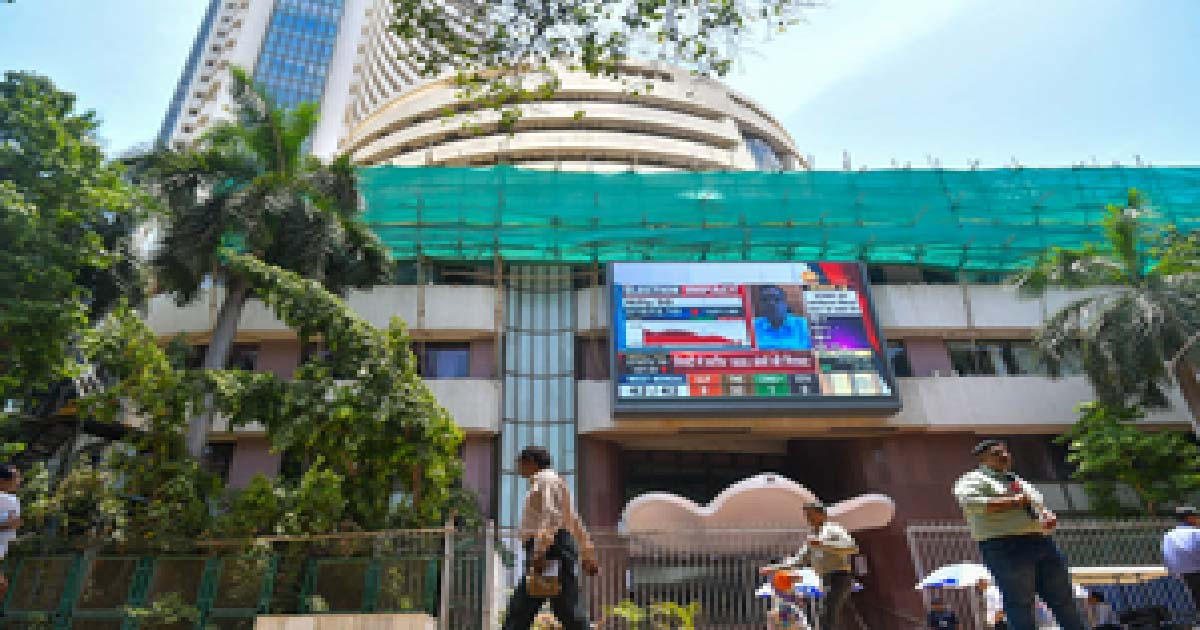Business
Union Budget 2022-2023 garners mixed response from country’s leading educationalists

The Union Budget gains applause for digitalization of education and making it accessible at the grassroots level. Still, many believe more could have been done to elevate the quality of education as well.
The leading names among the country’s higher education fraternity welcomed the Union Budget 2022, announced by Finance Minister Nirmala Sitharaman on February 1. The sector appreciated the budget being in line with promoting human capital through digital tools such as the ‘one class one TV channel’ programme proposed under the PM e-Vidya scheme.
It laid out a progressive vision the Government holds for capitalizing on India’s demographic advantages by suggesting a digital university, creating a conducive environment for inter-university collaborations, and introducing a number of skill development programmes. The Union budget 2022-2023 has allocated Rs 63,449.37 crore to the Department of School Education and Literacy, an increase of about 6.6 per cent (Rs 9,000 crore) over the current financial years. It sets a straight road for the Government to achieve its long-term mission of increasing the employability of the country’s youth by promoting upskilling, reskilling and several learning measures equipping them with new-age skills.
Dilip Puri, Founder & CEO, Indian School of Hospitality, appreciated the move stating, “We welcome the new initiatives introduced by the Government in the Union Budget 2022 to revive and boost our economy. The Government has identified areas that need financial assistance and support, and a clear focus is laid on the education sector. The setting up of digital universities is a progressive move by the Government – by reaching out to every student in the remote corners of our country, they will give them access to education by collaborating with world-class institutes and educators. We hope the execution comes through swiftly and accelerates the growth of edtech. We are also delighted that the Government showed specific interest to promote and facilitating upskilling and reskilling programmes. We hope through continuous skilling avenues we are able to direct our efforts towards skilling aspirants and increase employability in the hospitality sector.”
Shishir Jaipuria, Chairman FICCI Arise and Chairman Seth Anandram Jaipuria Group of Educational Institutions, also commended the government’s efforts in aligning the budget provisions with the progressive elements of National Education Policy 2020.
Shishir Jaipuria said, “The Union Budget 2022 takes forward the vision of universalizing quality education as enshrined in the National Education Policy 2020. The decision to expand the PM e-VIDYA scheme to 200 TV channels and to also develop high-quality e-content in all spoken languages will benefit the students of grades 1 to 12, who suffered learning loss due to the closure of schools during the Covid-19 pandemic.
“The formation of Digital University, as announced in the budget, will be a laudable initiative. The Digital University will help to make world-class education accessible in different Indian languages to all students, even in far-flung areas. The simultaneous proposal to train teachers to build their competency and empower them to develop quality e-content will ensure better learning outcomes. I welcome the move to set up 750 e-labs in science and mathematics and 75 skilling e-labs that will nurture scientific temperament and critical thinking skills important for 21st-century learners.
“Going beyond the e-learning initiatives, the government has rightly decided to designate five academic institutions as ‘centres of excellence to deliver courses in urban planning and design. The move will take forward the vision of India-specific urban development. The budget 2022 is aimed at providing a major push to e-learning, reduce learning gaps and make education inclusive.”
Niranjan Hiranandani, Provost – HSNC University appreciated the government’s construct of a well-rounded budget, promoting equal accessibility of education and growth mindset among students, irrespective of their backgrounds.
Hiranandani said, “Industry lauds & welcomes the thrust to the digital ecosystem while focussing on building and upgrading the digital infrastructure for quality education. Setting up of digital universities will enhance the availability of education to the rural students following the hub and spoke model. With easy access to education in regional language, every student will get an opportunity to empower and equip themselves.
“Moreover, measures for quality e-content appear promising to educate teachers effectively for better e-teaching outcomes. Besides, there is a surge in the scope of personalized learning, especially in the digital ecosystem. The budget also puts required emphasis on skilling, which makes an individual employable and sustainable. The skilling courses will not just encourage learners to apply critical thinking and creativity but also make them industry-ready, which is evidence of shaping the youth of India for a better future.”
Understanding the need for skill-based education, Bikram Agarwal, CFO, Seth Anandram Jaipuria Group of Educational Institutions, praised the budget offerings.
Agarwal said, “The most important takeaway of the Union Budget 2022 is the slew of decisions that have been taken to empower the digital learning ecosystem in the country. The formation of Digital University and the initiative to create quality e-content in all Indian languages will make learning inclusive for all. Besides these moves to nurture academic rigour, the decision to launch the DESH-Stack e-portal will help to skill and upskill learners.
“At the same time, the Government aims to improve learning at Agriculture University by revising and revamping the syllabus to address the practical needs of modern agriculture. I also appreciate the decision to involve academia in defence research and development for better designing and development of military platforms and equipment. The scope of this budget is quite wide. It touches upon several aspects of the education sector and is to be lauded.”
While many applauded these moves, some believed that the government could have done more. The budget critics felt that this year saw lesser investments and initiatives relative to the last year’s budget for promoting quality education across all strata of society.
Reacting to the budget, Professor Tarun Jain, Associate Professor of Economics, IIM Ahmedabad, said, “The Finance Minister has mentioned supplementary teaching through additional TV channels (PM eVidya) to make up for the education loss of the last two years. This is minuscule given the tremendous learning loss that our children have experienced. Significant investments in improving school quality are critical for ensuring that our demographic dividends are actually realized. This has to run against the reality that barely 8 per cent of rural students and 23 per cent of urban students have access to the Internet.
Even when students have Internet access, the quality of online education remains poor. We have to benchmark the budget commitments against the aspirations of the Indian people. High-quality education is both a critical component of what young people hope for, and also have some of the highest returns on investment in the economy. Thus, the Government should consider boosting investments in public education considerably.”
Overall the Union Government received a favourable response for its budgetary recommendations to promote skill-based learning powered by digitalization. From short-term skilling programmes to upskilling, reskilling, apprenticeships and lifelong learning, a wide range of training opportunities have been put across by setting up thousands of skill centres and special training centres. The budget ensured that the Government’s focus on skill training would continue to make youth employable, further contributing to the country’s growth and economic health.
Business
Sensex, Nifty open lower amid fresh concerns over US tariffs

Mumbai, Jan 9: The Indian benchmark indices posted mild losses early on Friday amid rising geopolitical tensions and renewed threats of 500 per cent US tariffs on Indian goods under the provisions of the Russia Sanctioning Act.
As of 9.29 am, Sensex slipped 107 points, or 0.13 per cent to 84,073 and Nifty eased 26 points, or 0.10 per cent to 26,850.
Main broad cap indices posted stronger losses compared to benchmark indices, with the Nifty Midcap 100 down 0.29 per cent, while the Nifty Smallcap 100 lost 0.84 per cent.
ONGC and Bharat Electronics were among top gainers on the Nifty pack. Nifty realty and media were the top losers, down 2.14 per cent and 1.34 per cent, respectively. All sectoral indices were trading in red, except IT and PSU Bank.
Immediate support lies at 25,700–25,750 zone, and resistance placed at 26,150–26,200 zone, market watchers said.
After the sharp correction on Thursday triggered by the possibility of about a 500 per cent tariff on India under the provisions of the Russia Sanctioning Act approved by US President Donald Trump, the market will be focused on the verdict, expected from the US Supreme Court on the legality of Trump tariffs, analysts said.
On Thursday, Nifty extended its losing streak for a fourth consecutive session, falling 263 points to close at 25,876.
Asia-Pacific markets traded mixed in the morning session as investors parsed China’s inflation data which accelerated in December to the fastest pace in nearly three years.
In Asian markets, China’s Shanghai index gained 0.3 per cent, and Shenzhen added 0.57 per cent, Japan’s Nikkei advanced 1.14 per cent, while Hong Kong’s Hang Seng Index dipped 0.07 per cent. South Korea’s Kospi advanced 0.69 per cent.
The US markets were mostly in the green zone overnight even as Nasdaq lost 0.44 per cent. The S&P 500 gained 0.01 per cent, and the Dow moved up 0.55 per cent.
On January 8, foreign institutional investors (FIIs) sold net equities worth Rs 3,367 crore, while domestic institutional investors (DIIs) were net buyers of equities worth Rs 3,701 crore.
Business
Delhi HC stays order requiring second review of RBI Ombudsman complaints

New Delhi, Jan 8: The Delhi High Court on Thursday stayed a single-judge direction that required the Reserve Bank of India (RBI) to institute a second level of human review for consumer complaints dismissed by its banking ombudsman.
A division bench of Chief Justice D.K. Upadhyaya and Justice Tejas Karia passed the interim order on an appeal filed by the RBI against a ruling delivered by Justice Prathiba M. Singh, which required such reviews to be conducted by legally trained professionals, including retired judicial officers or lawyers with a minimum of ten years’ experience.
While staying the impugned directions, the CJ Upadhyaya-led Bench observed that, prima facie, it found force in the submissions advanced on behalf of the RBI.
“Accordingly, we provide that the directions contained in paragraph 47(5) and 48 of the impugned judgment by the learned single judge dated November 27, 2025, shall remain stayed,” it ordered.
The bench also stayed the single-judge’s direction requiring the RBI Deputy Governor to submit a compliance affidavit by January 15, 2026. The matter has now been scheduled for further hearing on March 17.
Appearing for the RBI, Solicitor General of India Tushar Mehta submitted that the single judge had travelled beyond the permissible scope of judicial review under Article 226 of the Constitution.
The Centre’s second-highest law officer submitted that the Reserve Bank-Integrated Ombudsman Scheme, 2021, is a statutory scheme framed under Section 35A of the Banking Regulation Act and Section 18 of the Payment and Settlement Systems Act, and can be altered or modified only by authorities empowered under those enactments.
In her November 27, 2025, ruling, Justice Prathiba M. Singh had expressed concern over complaints being rejected through “system-generated responses” and held that the Ombudsman Scheme must be “an effective Scheme and not a mere toothless division of the RBI”.
The judgment was delivered in a writ petition filed by advocate Sarwar Raza, who had approached the Delhi High Court alleging harassment and wrongful rejection of his complaints by the RBI Ombudsman following a disputed credit card transaction of Rs 76,777.
The single-judge Bench had directed the RBI to ensure that customer complaints are not rejected merely through a mechanised process and that complainants should be given an opportunity to correct minor errors.
It had further ordered that whenever complaints are finally rejected, they must undergo a second level of human supervision by legally trained personnel, observing: “If the complaint redressal mechanism adopted by the Ombudsman is made more effective and efficient, litigation in courts and consumer forum/s can be reduced considerably.”
Business
Sensex, Nifty end lower as India-US trade tension spook investors

Mumbai, Jan 8: Indian equity markets witnessed their sharpest fall in a month on Thursday as benchmark indices extended losses for the fourth straight session, weighed down by rising concerns over India–US trade tensions.
Investor sentiment turned cautious after reports suggested that the administration of US President Donald Trump could consider imposing steep tariffs of up to 500 per cent on Indian goods.
The possibility of such harsh trade measures triggered widespread selling across sectors, leading to broad-based risk aversion in the market.
By the end of the session, the Sensex closed at 84,180.96, slipping 780.18 points or 0.92 per cent.
The Nifty also ended lower at 25,876.85, down 263.9 points or 1.01 per cent.
“A sustained close below 25,900 increases the probability of further downside toward the 25,800–25,700 zone, while a recovery above 26,000 is essential to stabilise near-term sentiment,” an analyst said.
“Despite the current correction, the broader weekly and monthly trend structure remains positive, although short-term corrective pressure may persist if key supports fail to hold,” as per the expert.
On Sensex 30-packs, TCS, TechM, L&T, Reliance Industries and Tata Steel were among the top losers.
On the other hand, Eternal, ICICI Bank, Bajaj Finance, and BEL were the only gainers.
The selling pressure was even more pronounced in the broader market. Mid- and small-cap stocks saw sharp declines, with the Nifty Midcap 100 and Nifty Smallcap 100 indices falling nearly 2 per cent each.
Sector-wise, losses were widespread, with all indices ending in the red. Metal stocks bore the brunt of the sell-off as the Nifty Metal index dropped over 3 per cent.
Oil and gas stocks also remained under pressure, with the Nifty Oil and Gas index falling around 2.8 per cent.
PSU banking and IT stocks were among the other major laggards, declining about 2 per cent each.
Analysts said that the market mood remained cautious as investors grappled with global trade uncertainties and the potential impact of rising tariffs on India’s export-driven sectors.
-

 Crime3 years ago
Crime3 years agoClass 10 student jumps to death in Jaipur
-

 Maharashtra1 year ago
Maharashtra1 year agoMumbai Local Train Update: Central Railway’s New Timetable Comes Into Effect; Check Full List Of Revised Timings & Stations
-

 Maharashtra1 year ago
Maharashtra1 year agoMumbai To Go Toll-Free Tonight! Maharashtra Govt Announces Complete Toll Waiver For Light Motor Vehicles At All 5 Entry Points Of City
-

 Maharashtra1 year ago
Maharashtra1 year agoFalse photo of Imtiaz Jaleel’s rally, exposing the fooling conspiracy
-

 National News1 year ago
National News1 year agoMinistry of Railways rolls out Special Drive 4.0 with focus on digitisation, cleanliness, inclusiveness and grievance redressal
-

 Maharashtra1 year ago
Maharashtra1 year agoMaharashtra Elections 2024: Mumbai Metro & BEST Services Extended Till Midnight On Voting Day
-

 National News1 year ago
National News1 year agoJ&K: 4 Jawans Killed, 28 Injured After Bus Carrying BSF Personnel For Poll Duty Falls Into Gorge In Budgam; Terrifying Visuals Surface
-

 Crime1 year ago
Crime1 year agoBaba Siddique Murder: Mumbai Police Unable To Get Lawrence Bishnoi Custody Due To Home Ministry Order, Says Report












